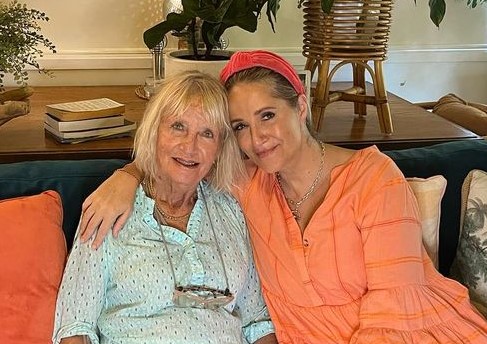Residential aged care facilities (otherwise known as nursing homes or aged care homes) are an excellent option for older Australians who need care and attention to achieve their well-being goals.
Many aged care homes are heavily supported by government funding. Read on to find out more about fees and charges for residential aged care.

How do residential aged care fees work?
In Australia, fees and charges for residential aged care are broken down into three areas:
Basic Daily Care Fee:
All aged care residents pay the same Basic Daily Care Fee. This fee covers day-to-day living costs such as meals, cleaning, facilities management, and laundry, and it is not means tested.
The Basic Daily Care Fee is paid directly to the aged care facility, usually on a monthly or fortnightly basis. It is set at 85% of the standard full aged pension and is currently $61.96 per day.
Means-tested fee:
The means-tested fee is calculated using a resident’s income and assets, including their home if they own one. Someone with over $32,819.80 in annual income and/or $59,500 in assets will need to pay a means-tested fee, which is an ongoing fee towards the cost of their personal and clinical care.
Means-tested fees are determined by an assessment coordinated by Centrelink or the Department of Veteran Affairs.
Refundable Accommodation Deposit (RAD):
The Refundable Accommodation Deposit pays for the cost of the room a resident is moving into and is negotiated between the resident and the aged care facility.
The average RAD in Australia is about $470,000 but prices can vary greatly depending on location and facility.
If a resident has income below $32,819.80 and assets below $59,500, the Australian Government will cover the RAD for their accommodation.
Here is some more information about Refundable Accommodation Deposits and how they can be organised and paid:
Rad in Aged Care | Rad Payment Aged Care | Aged Care Decisions
Daily Accommodation Payment (DAP)
If your income and assets are above the threshold for government support, but you cannot, or do not wish to pay the RAD applicable to your chosen aged care facility, you can choose to instead pay a Daily Accommodation Payment (DAP).
The Daily Accommodation Payment covers the cost of your room that you have not paid up-front as a RAD. The DAP is paid periodically (usually fortnightly or monthly) and is not refundable.
The DAP is calculated using the amount of the RAD for your chosen room x 365 days x a Maximum Permissible Interest Rate (MPIR) set by the Australian Government. The current MPIR is 8.34%
You can choose to pay for your room using a combination of a RAD and DAP.
Read more about the MPIR:
All about the Maximum Permissible Interest Rate (MPIR) (agedcaredecisions.com.au)
Additional or ‘extra’ service fees
Many aged care homes offer additional services such as hairdressing, pay TV, specialised menus, or custom fittings and furnishings. If you agree to additional services or an ‘extra services’ room, you will need to pay these extra fees, as negotiated with the aged care facility. Additional and extra fees are not subsidised by the government.
The Australian Government’s Schedule of Fees and Charges for Residential and Home Care is updated quarterly.
Read more:
Schedule of Fees and Charges for Residential and Home Care (agedcaredecisions.com.au)
Aged Care Decisions’ FREE service helps tens of thousands of families find and compare residential aged care vacancies.
Our custom-built software, together with our professionally trained Placement Specialists, can match your location, budget, care needs and personal preferences with available providers that suit your specific needs.
Our service is 100% FREE, 100% independent, and 100% personal.
We do all the running around for you, with less stress and hassle, and at ZERO cost to you.
Connect with us here to get started.
Here’s how Aged Care Decisions’ FREE aged care matching service works:
Factors that can influence nursing home costs include:
- The type of nursing home
- Available assets, savings, and income
- Funding eligibility
- Extra add-ons
- The age of the resident
- The level of care required.
It is not possible to put an exact dollar figure on the cost of nursing homes in Australia because these factors can create very significant differences.
How to estimate what you may pay
My Aged Care have an online fee estimator tool that can give you a general idea about how much you may pay for residential aged care.
The fee estimator asks questions about your relationship status, who lives in your home, whether you own it outright, and your income, superannuation, and debts.
It will then give you a ballpark idea of the basic daily care fees, means-tested fees, and accommodation contributions you’ll need to make for residential care.
Do nursing homes take your pension?
Depending on your financial circumstances, your basic daily care fee may be covered by a portion of your pension. It can be transferred directly from your pension to your aged care facility.
The basic daily care fee is currently set at 85% of the standard aged pension.
Is the family home counted as an asset for aged care?
Yes, the family home is counted as an asset when it comes to paying for residential aged care.
The only time this is not the case is if a ‘protected person’ is using the home as their place of a primary residence.
A ‘protected person’ may be:
- A partner or dependent child
- A carer who has lived with the individual going into care for the past 2 years and is eligible for income support.
- A close relation such as a sister, brother, parent, child or grandchild who has lived with the individual for the past 5 years and is eligible for income support.
Read more:
Do I need to sell my home to pay for aged care? (agedcaredecisions.com.au)
What if you can’t afford aged care?
In Australia, everyone can access aged care services, regardless of their financial situation.
For those who do not have the means to pay for residential aged care there are options available.
We highly recommend speaking to a financial advisor before entering residential aged care.
You can receive free financial information through Services Australia’s Financial Information Service (FIS): Financial Information Service – Services Australia
My Aged Care also has handy links to organisations, services and tools that can offer financial guidance, advice, and support: Financial support and advice | My Aged Care
You may also be able to apply for financial hardship assistance to cover the cost of aged care.
Read more:
What happens if you can’t afford aged care? (agedcaredecisions.com.au)
Aged Care Decisions’ FREE service helps tens of thousands of families find residential aged care vacancies.
Our custom-built software, together with our Placement Specialists, can match your location, budget, care needs and personal preferences with available providers that suit your specific needs.
Our service is 100% FREE, 100% independent, and 100% personal.
We do all the running around for you, with less stress and hassle, and at ZERO cost to you.
Connect with us here to get started.














